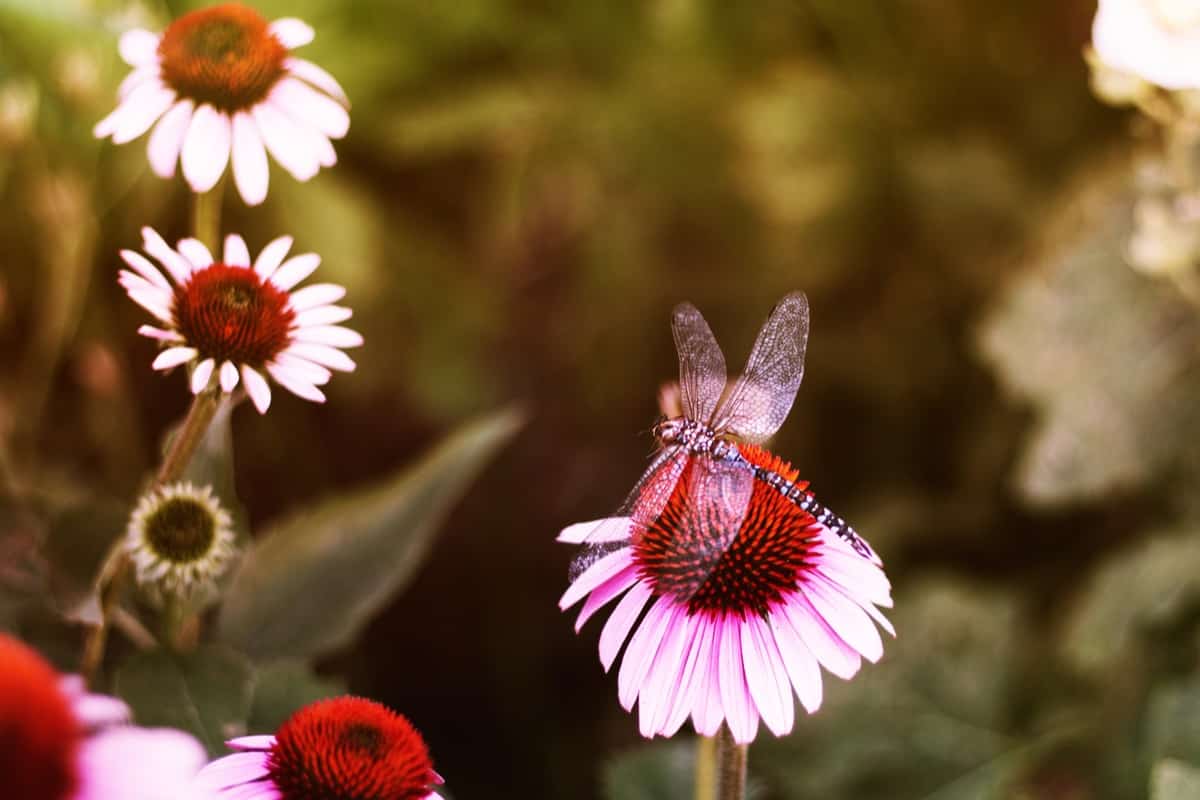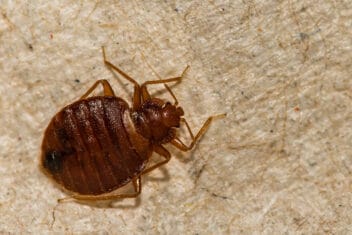I have to admit – I’ve always had a bit of a phobia when it comes to dragonflies.
There’s just something about these flighted creatures that gives me the heebie-jeebies – I’m not sure exactly what it is!
All I know is that I’ve never been fond of having them around.
However, after experiencing some pest issues in my garden this year, I started to wonder if these insects might be worth keeping around.
Here’s what you need to know about using dragonflies for pest control in the garden.

Why Dragonflies for Pest Control?
Dragonfly nymphs thrive in freshwater, spending years in this stage before becoming adults. Adults only live a couple of months.
Most abundant in the summer, dragonflies are large insects that are hugely beneficial in the home and garden. They are predators of insects that can cause you all sorts of grief in the garden, such as mosquitoes, moths, and midges.
The average dragonfly consumes up to 15% of its body weight per day in insects – we’re talking about things like horseflies, blackflies, deerflies, and even termites in addition to the pests I mentioned above.
They’re nature’s Orkin.
Dragonflies have excellent eyesight and are often confused with their smaller relatives, the damselfly. Adult dragonflies focus primarily on eating and mating and rely on water for breeding. This is why you’re more likely to find them in wet areas, like near wetlands.
How to Attract Dragonflies for Pest Control
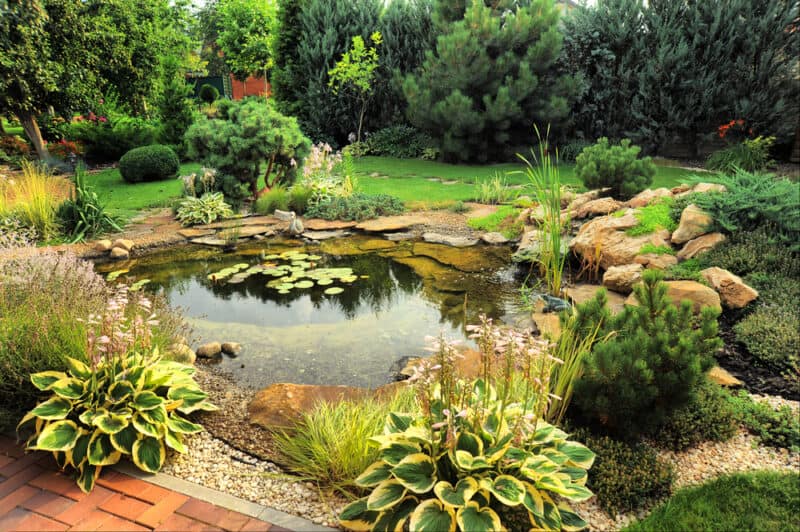
The easiest way to attract dragonflies is to provide them with the right kind of habitat. Here are some tips to help you attract dragonflies to get rid of the mosquitoes, moths, or other pests that are plaguing you this summer.
1. Add Water Features
The best way to attract dragonflies to your lawn or garden is with water. Dragonflies lay their eggs either in or near the water, which is also where their young hatch and develop into nymphs.
These creatures live underwater for months or years before emerging. However, they don’t need to be fully grown to make an impact. Even nymphs are helpful, dining on the larvae of mosquitoes and other pests.
To attract dragonflies, consider building a pond. You can also work with the water features you already have, making sure they are dragonfly-friendly.
Your pond doesn’t need to be large or heavily maintained to attract dragonflies. It doesn’t even need to have a filter. Just make sure it’s located in a spot that receives 5 or 6 hours of sun (ideally midday sun) and is somewhat protected from the wind.
To be the ideal dragonfly habitat, it should be shallow at the edges and 2-feet deep (at most) at its deepest. If a pond is too shallow, it can overheat or dry up. The deeper areas also protect dragonflies from predators.
If you add your water feature, make sure it’s still. Dragonflies lay their eggs in still water, rather than moving water.
2. Grow Water Plants
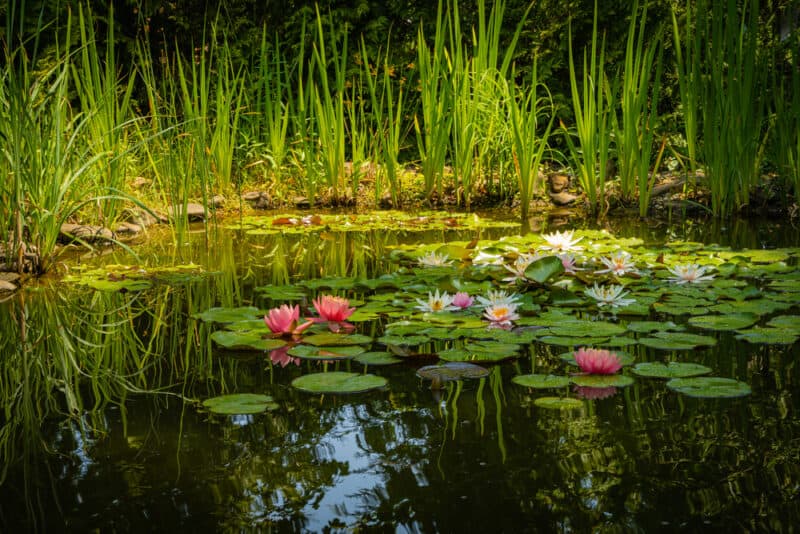
Aquatic plants, both those that are floating, submerged, and growing at the water’s edge, provide a variety of benefits to dragonflies. They oxygenate the water and remove carbon dioxide. They can also provide resting and hiding places for young nymphs.
Not only that, but dragonflies will use the plants as “incubation chambers,” placing their eggs into the soft stems.
Taller plants that poke up out of the water provide sports for adults to perch and look for mates or food. The height is also great for nymphs, who might need to climb higher to complete the transformation process from nymph to adult.
Later in this post, I’ll give you some ideas of the best dragonfly-friendly plants you can grow to help attract them.
3. Provide Edging
While water plants grown directly in the pond are important for dragonflies, it’s also essential to consider what you have going on around the edge of the pond.
Dragonflies are extremely territorial and will chase away or fight with aggressors. Even if you don’t put plants around the pond, adding tall features like bamboo stakes will help provide a post for the dragonflies to defend their turf.
4. Add Flat Rocks
A few flat rocks can be helpful around your pond, too. These will not only help the dragonflies defend their territory but will give them a spot to hang out and bask in the sun.
5. Keep an Eye on the Fish
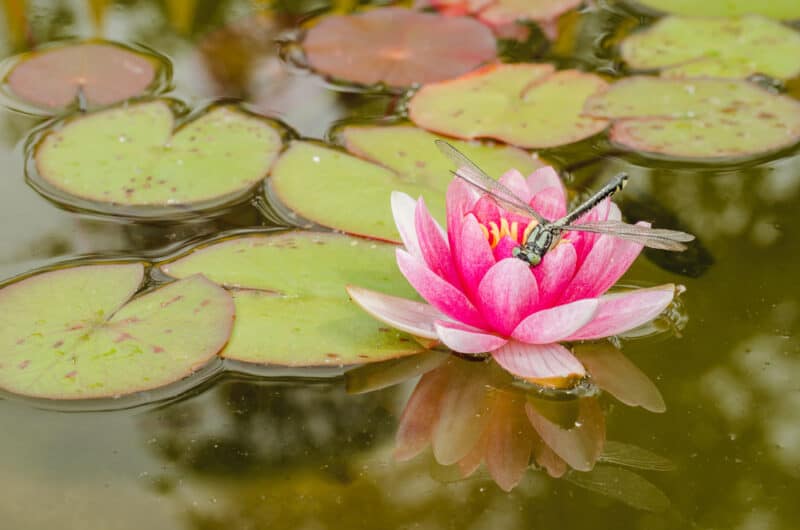
Finally, if you add a water feature to your property, you must consider the other creatures that might be inhabiting it.
Don’t introduce fish, ducks, or frogs to your pond (if it’s man-made, of course – you might not have a choice when it comes to natural water features!). They’ll eat the dragonflies and make it hard for the populations to thrive.
6. Beekeepers Beware
If you keep bees on your homestead, it’s important to note that dragonflies are also bee predators. They are carnivores who are pretty much indiscriminate in what they choose to chow down on!
That doesn’t mean that you can’t keep bees and attract dragonflies at the same time. However, if you’re planning on installing a water feature, like a pond, to attract dragonflies, you may have to make sure it’s far away from your beehives to be safe.
Best Dragonfly-Friendly Plants
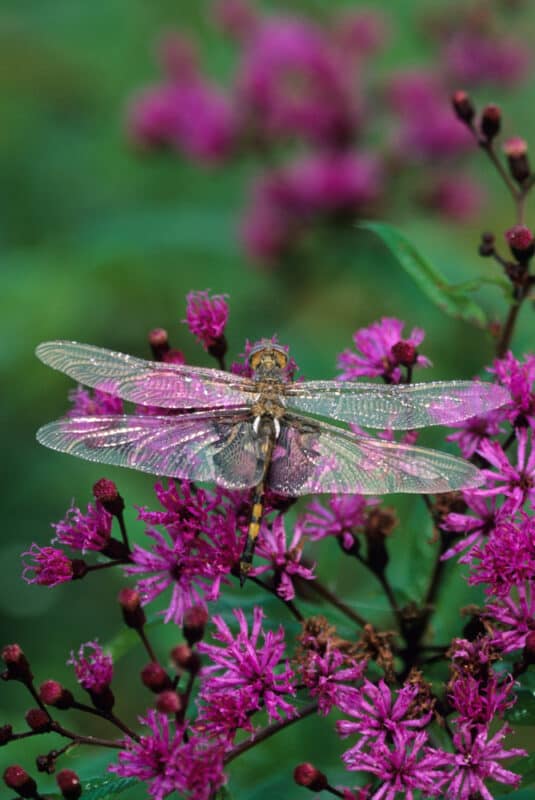
Here are a few of the best dragonfly-friendly plants you can grow. Remember the best way to grow these plants and to keep dragonflies (and other beneficial insects) safe is to avoid using fertilizers, herbicides, and other chemicals.
If you want to attract dragonflies but aren’t super keen on building a water feature, don’t worry. The following is a list of plants that can help attract them to your property. While some are meant to be grown in or around water, many are common plants that might attract dragonfly prey (and therefore, can attract the dragonflies, too).
Consider growing a few of the following to encourage dragonflies to stop by for a visit:
- Joe Pye Weed
- Black-Eyed Susan
- Meadow Sage
- Yarrow
- Borage
- Coneflowers
- Swamp Milkweed
- Arrowhead
- Wild Celery
- Water Lily
- Water Horsetail
- Cattail
If none of these suit your fancy, stop by and have a chat with your local cooperative extension. They should be able to give you some recommendations on native plants in your area that you can grow to attract pollinators, beneficial insects, and of course, dragonflies!
They may even be able to give you advice that’s tailored to your unique soil type and microclimate as well so it’s worth visiting them.
Do You Have to Have a Pond to Attract Dragonflies?
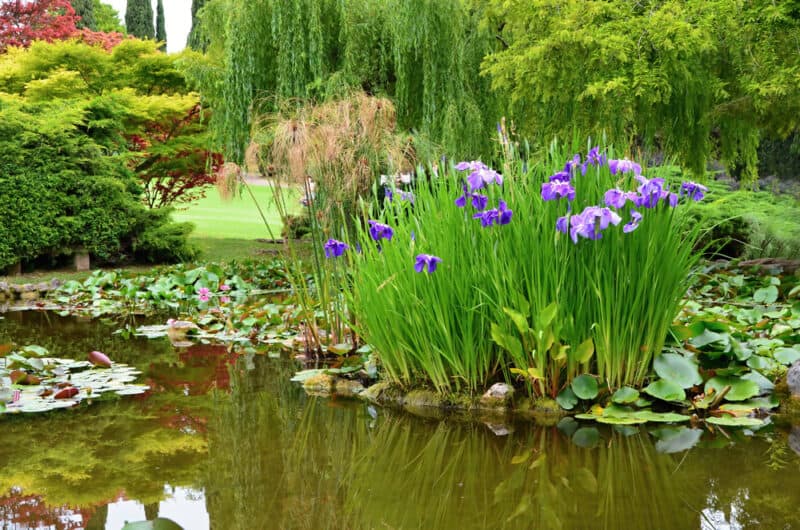
Although a pond or similar type of water feature can be helpful when it comes to attracting dragonflies, it’s not a dealbreaker if you don’t have one.
There are a few other ways you can encourage dragonfly populations. For one, get rid of your bug zapper! There’s no need for this kind of repellant if you have dragonflies doing the work for you.
Here’s one more important fact for you to note – if you’re like me, and have an unexplained phobia of dragonflies, relax.
These creatures aren’t harmful in the slightest – despite what many people believe, they don’t bite or sting. So invite them to your garden without worries – even though they might look spooky, they can be a lot of help to any gardener.
